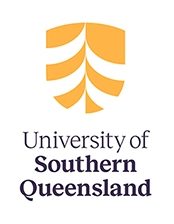Submissions
Submission Preparation Checklist
Check that the following requirements are met:
☐ This submission meets all requirements outlined in the Author Guidelines.
☐ This submission has not been previously published, nor is it under consideration by another journal.
☐ All authors have approved the submission and are correctly listed as contributors.
☐ Ethics approval details have been included, where relevant.
☐ Permission has been obtained to publish all photos, datasets, and other third-party material.
☐ Both a full version and a de-identified manuscript have been provided for double-blind review.
☐ All references have been checked for accuracy, completeness, and correct formatting.
☐ All tables and figures have been numbered and labelled appropriately.
☐ The manuscript adheres to APA 7th edition style and referencing.
☐ The title is concise and informative, and the abstract can stand alone.
☐ The submission fits the aims and scope of the Journal of Pathways Education and Research (JPER).
☐ The submission demonstrates theoretical, conceptual, or empirical rigour.
Articles
Section default policy
Copyright Notice
Authors who publish with this journal agree to the following terms:
1. Authors retain copyright and grant the Journal right of first publication with the work simultaneously licensed under a Creative Commons Attribution - No Derivatives 4.0 International Licence (CC BY ND). This Licence allows others to share the work with an acknowledgement of the work's authorship and initial publication in this journal.
2. Authors have obtained all necessary permissions for the reproduction of any third-party copyright materials included in submissions.
3. Authors are permitted and encouraged to post their unmodified work online (e.g., in institutional repositories or on their website) prior to and during the submission process, with an acknowledgement of its initial publication in this journal. This can lead to productive exchanges, as well as earlier and greater citation of published work.
Privacy Statement
The names and email addresses entered in this journal site will be used exclusively for the stated purposes of this journal and will not be made available for any other purpose or to any other party.
Personal information (as that term is defined in the Information Privacy Act 2009) collected by the journal will be used exclusively for publication purposes and unless required by law, will not be shared with any other party. The data collected from registered and non-registered users of this journal falls within the scope of the standard functioning of peer-reviewed journals. It includes information that makes communication possible for the editorial process; it is used to inform readers about the authorship and editing of content; it enables collecting aggregated data on readership behaviors, as well as tracking geopolitical and social elements of scholarly communication.
This journal’s editorial team uses this data to guide its work in publishing and improving this journal. Data that will assist in developing this publishing platform may be shared with its developer Public Knowledge Project in an anonymized and aggregated form, with appropriate exceptions such as article metrics. The data will not be sold by this journal or PKP nor will it be used for purposes other than those stated here. The authors published in this journal are responsible for the human subject data that figures in the research reported here.
Those involved in editing this journal seek to be compliant with industry standards for data privacy, including the European Union’s General Data Protection Regulation (GDPR) provision for “data subject rights” that include (a) breach notification; (b) right of access; (c) the right to be forgotten; (d) data portability; and (e) privacy by design. The GDPR also allows for the recognition of “the public interest in the availability of the data,” which has a particular saliency for those involved in maintaining, with the greatest integrity possible, the public record of scholarly publishing.



